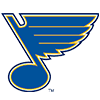Every projection system carries at least some amount of bias or opinion, typically in the form of how the designer of the system chose to weigh various inputs, which is how we end up with multiple variations of WAR (for example). Similarly, the strategy of giving various categories different weight allows me to personalize the rankings while providing insight into the line of thinking that went behind each player's scores. Sure, I could just churn out a list of how I personally have these pitchers ranked, but I think it makes more sense to communicate my preferences and allow the readers to make up their own minds about the individual scores that make up each player's rating. I will largely focus on the subjective scores within the individual player comments, specifically those regarding mechanics and stuff, so that the ratings have more explanation.
With that out of the way, let's kick off our breakdown of the fantasy starting
Every projection system carries at least some amount of bias or opinion, typically in the form of how the designer of the system chose to weigh various inputs, which is how we end up with multiple variations of WAR (for example). Similarly, the strategy of giving various categories different weight allows me to personalize the rankings while providing insight into the line of thinking that went behind each player's scores. Sure, I could just churn out a list of how I personally have these pitchers ranked, but I think it makes more sense to communicate my preferences and allow the readers to make up their own minds about the individual scores that make up each player's rating. I will largely focus on the subjective scores within the individual player comments, specifically those regarding mechanics and stuff, so that the ratings have more explanation.
With that out of the way, let's kick off our breakdown of the fantasy starting pitcher pool by starting at the top, beginning with the top-ranked pitcher according to NFBC ADP (ranks as of Jan. 31) and working our way down the list of arms. The top of the rankings on my list will conform closely with the consensus ranks given by NFBC ADP - with rare exception, the pitchers with the best stats are also those with the best stuff and the best deliveries, and they do it for the most innings - but the skills-oriented list that is presented here will deviate from the NFBC ranks more as we move down the line. The intrigue and discrepancies will mount the further we get from the top.
Once again, here are the points possible in each of the seven categories on these fantasy pitcher rankings (please consult the original article for translating stat values into points):
Strikeouts - 10 points
ERA - 6
WHIP - 6
Wins - 3
Innings - 10
Stuff - 8
Mechanics - 7
Total - 50
Clayton Kershaw
NFBC ADP: 1
DT Rank: 1
| K | 10/10 |
| ERA | 6/6 |
| WHIP | 7/6 |
| W | 3/3 |
| IP | 9/10 |
| Stuff | 8/8 |
| Mechanics | 5/7 |
| TOTAL | 48/50 |
Kersh plays the role of Neo in the Matrix of pitching. His scorecard is nearly perfect, and in fact he breaks the scale in terms of at least one measurement (WHIP), leaping the field by such a wide margin that I felt compelled to award him more than the points possible in the category. That's what happens when a pitcher posts a mark (0.725) that is 25 percent lower than the second-best in the game (Max Scherzer's 0.968). In fact, he breaks the system on both ratios, having registered an ERA of 2.53 or less in each of six consecutive seasons, including a sub-2.00 mark in three of the past four seasons and a major-league-leading ERA in four of the past six, though the relative dearth of six-point starters in the ERA category keeps him from breaking that particular scale.
If it weren't for his mechanics, Kershaw might earn a perfect score, and though he has honed the delivery to become a motion that he can repeat ad nauseum, it took several years for him to overcome his own mechanical inefficiencies. That said, every year he shows up a little bit more balanced, with slightly better posture and torque that is more efficient than in the past. He's the only player to crack 300 strikeouts in a season since Randy Johnson and Curt Schilling were wearing purple pinstripes, and even his hit rate is apparently regression-proof, as the southpaw has allowed 6.7 H/9 or lower in six straight seasons, with the numbers showing a downward trend over that stretch. The stuff is insane, the command is impeccable and nobody can match the numbers.
Max Scherzer
NFBC ADP: 2
DT Rank: 2
| K | 10 |
| ERA | 5 |
| WHIP | 6 |
| W | 3 |
| IP | 10 |
| Stuff | 7 |
| Mechanics | 5 |
| TOTAL | 46/50 |
Scherzer is the only pitcher in baseball who holds a perfect score of 10 for both his projected innings and his projected K rate. If placing a bet in Vegas for who will be the MLB strikeout leader in 2017, he's the prime candidate. Some might scratch their heads at his delivery, which features a fierce head-butting move into release point and during follow-through; it appears to be unstable, but I see it as merely an exaggerated version of a technique that is employed by many of the game's top pitchers, who actively transition the spine from hyperextension to flexion near release point. It might be more obvious with Scherzer, but that doesn't necessarily mean that it's a bad thing.
What I find even more odd is his arm action, as Scherzer uses a very low arm path throughout the acceleration phase, such that it looks like he is shot-putting the baseball. However, arm path and arm action are not parts of my mechanical evaluation of pitchers, so Scherzer is not penalized despite the odd look to his delivery.
Madison Bumgarner
NFBC ADP: 3
DT Rank: 3
| K | 9 |
| ERA | 5 |
| WHIP | 6 |
| W | 3 |
| IP | 9 |
| Stuff | 6 |
| Mechanics | 7 |
| TOTAL | 45/50 |
I covered Bummer in detail in the intro piece of this series, so I'll just add a few notes in this space. His overall score is tied for the third-highest mark among MLB pitchers using this rating system, and I ranked him ahead of the the other 45-point pitcher because Bumgarner has displayed such incredible consistency over the past several years. He not only put up consistently excellent stats from one year to the next, but he has shown the ability to get stronger throughout the campaign, as well.
One final point to gush about Bumgarner is that his incredibly-low walk numbers are made even more incredible given his low arm slot - pitchers with low slots tend to miss inside and outside when deliveries are mistimed, locations that are much more difficult to earn a strike than pitches that miss targets high or low (more common among over-the-top pitchers when the delivery is mistimed). This makes Bum's impeccable pitch command all the more impressive. His approach is simple yet effective; like Novocaine, just give it time and it always works.
Chris Sale
NFBC ADP: 4
DT Rank: 7
| K | 9 |
| ERA | 5 |
| WHIP | 6 |
| W | 3 |
| IP | 9 |
| Stuff | 6 |
| Mechanics | 4 |
| TOTAL | 42/50 |
Sale has been proving the doubters wrong throughout his career, becoming one of the game's most dominant hurlers. He used to take all kinds of flak for his vulture-like delivery, but the dissenters have become ever quieter as he has continued to maintain health and success at the highest level.
I have long held that Sale's mechanics aren't simply "good" or "bad" - his mid-delivery balance leaves much to be desired, but he finishes with a nearly-perfect position at release point, and much of the ugliness that stirred up the worry in the first place is dependent on elements such as joint integrity and structural stability, factors which are impossible to know without his going under the knife. So the pessimism was conjecture, and though his mechanics fall short of the players higher up on the list (knocking him down a couple slots on my personal hierarchy), it's not enough to overlook the laundry list of positives. His stuff could receive a higher grade, as Sale intentionally took something off the heat last year (down to 93.6 mph on his average four-seamer, from 95.6 mph in '15) and he could ramp it back up in 2017, but time will tell whether he goes back to his old strategy or maintains the approach from last season.
Noah Syndergaard
NFBC ADP: 5
DT Rank: 5
| K | 9 |
| ERA | 5 |
| WHIP | 5 |
| W | 3 |
| IP | 8 |
| Stuff | 8 |
| Mechanics | 5 |
| TOTAL | 43/50 |
Bow to the power of Thor's stuff - he improved upon the hammer years ago, and now it's the lightning bolts and the slider-darts that batters have to worry about. Syndergaard is a darling of the sabermetric community, and for good cause, as it is exceedingly rare for a player who is so young and throws so hard to display the excellent control of the strike zone that Thor has demonstrated over his brief career. Put me in the pile of analysts who fawn over his skills, but know that he comes with a few caveats. Any player who throws that hard (the hardest fastball among MLB starters) is at greater risk due to the increased kinetic toll that is placed on his throwing arm, something that is a natural byproduct of velocity.
He also dealt with bone chips in his throwing elbow last season, and even if we hand-wave that issue as something that he got past, the reality is that it limited his innings and the Mets will likely be careful not to let him endure too much of an increase this season. He should still be clear for 200-plus frames (Thor threw 183.2 innings in 2016), and though his hard slider (average velocity of 91.5 mph) requires less supination than other breaking pitches, it also means that more of his pitches are thrown at high velocity. Synder is the opposite of Bumgarner in that the young Met is more of an up-and-down guy (pitch location and trajectory) rather than side-side, as late spine-tilt encourages a taller release point. Syndergaard throws everything to everyone, with his greatest usage being a 32-percent rate of four-seamers to left-handed batters and nothing exceeding 28 percent once he gets to two strikes on a hitter.
Corey Kluber
NFBC ADP: 6
DT Rank: 4
| K | 9 |
| ERA | 5 |
| WHIP | 5 |
| W | 3 |
| IP | 9 |
| Stuff | 7 |
| Mechanics | 7 |
| TOTAL | 45/50 |
Kluber has been a pet pitcher of mine for a few years now, ever since RotoWire colleague Paul Sporer directed my attention Kluber's way in mid-2013. I was amazed by what I saw at the time, as his delivery was one of the best that I had seen and his stuff was worthy of the top of a big-league rotation. Sporer and I touted Kluber like crazy in the 2014 Starting Pitcher Guide, and after the right-hander won the AL Cy Young Award, I began getting a flood of questions about "who's the next Kluber?" The truth (and the answer I gave) was: nobody. It is extremely rare to see a pitcher with such incredible skills slip under the radar, but that's exactly what Kluber had done.
He has since developed a two-headed monster of a slider (which I have dubbed the Slydra) that he commands extremely well, whether invoking the typical diagonal break that is commonly associated with the slider or a more vertical tumble that Kluber uses to keep opposing batters on their toes. Of the past three seasons, I consider 2015 to be the aberration, and between an improved Cleveland offense (adding Edwin Encarnacion, getting Michael Brantley back) and the excellent win totals of 2016 and '14, I think that it's safe to pencil Kluber in as another three-point player in the wins department. He ties Bumgarner with the third-highest score in my rating system, and I wouldn't hesitate to take Kluber off the board as the fourth pitcher overall.
Jake Arrieta
NFBC ADP: 7
DT Rank: 9
| K | 8 |
| ERA | 6 |
| WHIP | 6 |
| W | 3 |
| IP | 8 |
| Stuff | 6 |
| Mechanics | 5 |
| TOTAL | 42/50 |
Like Kluber, Arrieta came out of nowhere to post dominant numbers, though Arrieta's career track seems to be a year behind that of Kluber. Look deeper and there is some potential for worry, from a walk rate that nearly doubled (from 5.5 percent in 2015 to 9.6 percent in '16) and a count of 16 wild pitches, more than the previous two seasons combined. Projecting Cubs pitchers is especially difficult, as they all enjoyed a historically-great defense last season (Arrieta allowed just 6.3 H/9), one that is bound to take a step backward due to a combination of regression and different personnel (Almora and Schwarber in, Fowler and Soler out).
Arrieta's transformation from subpar pitcher to Cy-contender was at least partly based in mechanics. With the Orioles, he deployed several different strategies with lift and stride, such that his timing was different on nearly every pitch. He ironed out that timing with the Cubs, and though the timing issues resurfaced in 2016, there is reason to think that pitching coach Chris Bosio can work with Arrieta to rediscover his ideal timing pattern. This optimism is reflected in the expected ratios, but he carries downside in the event that his timing issues persist into this season, while pitching in front of a lesser defense - there could be a lot of doubles hit off Cubs pitchers in 2017 that were harmless flyouts last year.
Jon Lester
NFBC ADP: 8
DT Rank: 10
| K | 7 |
| ERA | 5 |
| WHIP | 5 |
| W | 3 |
| IP | 9 |
| Stuff | 6 |
| Mechanics | 5 |
| TOTAL | 40/50 |
Lester is in a similar boat as Arrieta in the sense of playing in front of a defense that is expected to give back some hits this season. Lester has a much longer track record of excellence than does his rotation-mate, but the southpaw is compromised by his now-famous struggles with holding baserunners and fielding bunts. His strength is stability and relative predictability, rather than upside, making him an ideal candidate for the no.2 starter in a fantasy rotation, though he likely falls short of ace status.
His velocity is merely plus, with a four-seam fastball that averaged 93.2 mph last season, but Lester deserves credit for maintaining virtually the same pitch-speed throughout his career. This ability to hold firm makes it less likely that his skills suddenly decline, once again making Lester a relatively safe option among this year's stable of fantasy starting pitchers. His curveball was the most effective weapon last season, as opposing batters hit a measly .091 against the pitch, though Lester relied more on the fastball and cutter to pile up strikeouts.
Johnny Cueto
NFBC ADP: 9
DT Rank: 14
| K | 6 |
| ERA | 5 |
| WHIP | 5 |
| W | 3 |
| IP | 9 |
| Stuff | 5 |
| Mechanics | 5 |
| TOTAL | 38/40 |
I like Cueto fine - he's a fun guy to own and plays his home games in an awesome pitcher's park, with a long track record of success in the National League. But he lacks the single-category dominance to lead a fantasy pitching staff, in my opinion, and there is some downside in the form of timing issues that were on display during his brief time with Kansas City in 2015.
Cueto is known for his exaggerated Luis Tiant-inspired twist into max leg lift, in which he has been known to turn completely away from the batter with his letters facing the centerfield bleachers. He has also been known to quick-pitch, foregoing a leg lift to keep batters off-guard, as well as incorporating assorted pauses, head-fakes and stutter-steps that seemingly differ on any given pitch during a game. Cueto has the experience and the track record to prove that he can handle these disparate timing patterns, but even the most savvy veteran can fall off-track from time to time and these variations can throw a wrench into Cueto's effectiveness (rather than that of opposing batters) at times. This makes the funky approach a potential double-edged sword, with the ability to allow his stats to play above raw skills yet also possessing the influence to unravel his effectiveness.
David Price
NFBC ADP: 10
DT Rank: 8
| K | 8 |
| ERA | 5 |
| WHIP | 5 |
| W | 3 |
| IP | 10 |
| Stuff | 5 |
| Mechanics | 6 |
| TOTAL | 42/50 |
I've always been big on Price, and I think that the disappointment that results naturally from sky-high expectations has soured many fantasy gamers. That said, there has been some legitimate degradation to his skills in recent years that brings down the expectations related to his performance. The big question is whether he can regain the form that made him a regular Cy candidate, or if the skill-set that was on display last season is more indicative of things to come.
Let's start with the velo. Back when Price was a dominant force in his mid-twenties, his fastball regularly lit up radar guns, with a four-seamer that averaged 96 mph from 2010-12, but the heat settled down to the 94-95 mph range in the years that followed (from 2013-15). Last season that velo took another step backward, checking in at an average of 93.7 mph last year (four-seam data via Brooks Baseball). Even more appalling, at least to this evaluator, is that Price's A-grade mechanics took a turn for the worse. His leg lift all but disappeared, even from the windup, shrinking his stride and thus his extension at release point. He also fell out of sync - he had previously been incredible at repeating the delivery - as Price lost the timing of when to separate his hands, an aspect which negatively impacted his pitch command and which may have played a role in his diminished velocity, since he struggled to find ideal timing of his trigger and compromised his torque in the process. The above rating reflects optimism that Price can regain much of what he lost last season, while acknowledging that the top-flight velo that marked his early career is likely gone for good. Price has led the majors in innings in two of the past three seasons, giving his ratios additional weight, and the fact that his problems last year were related to hits and homers raises the optimism that he can regress in a good direction.



























